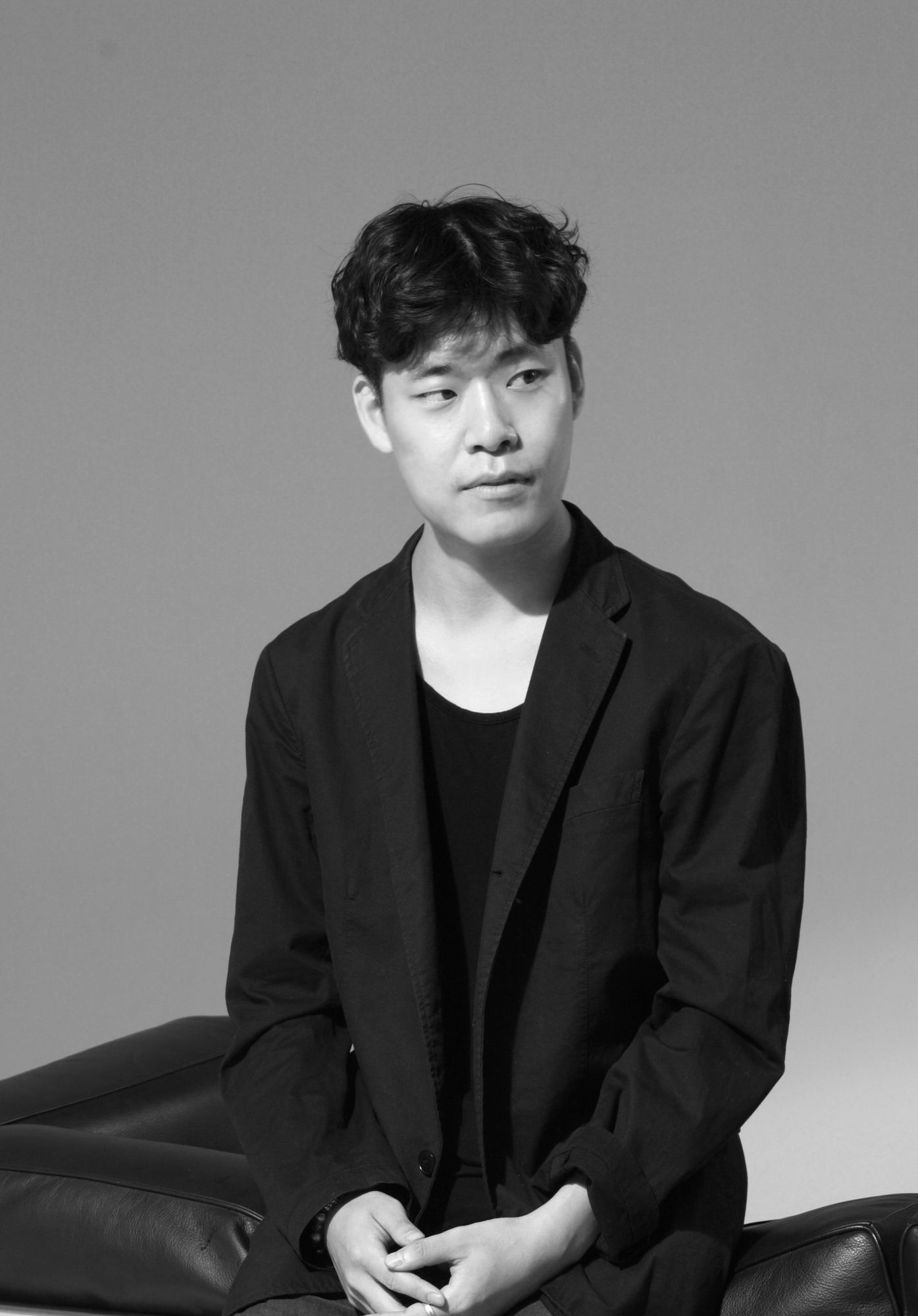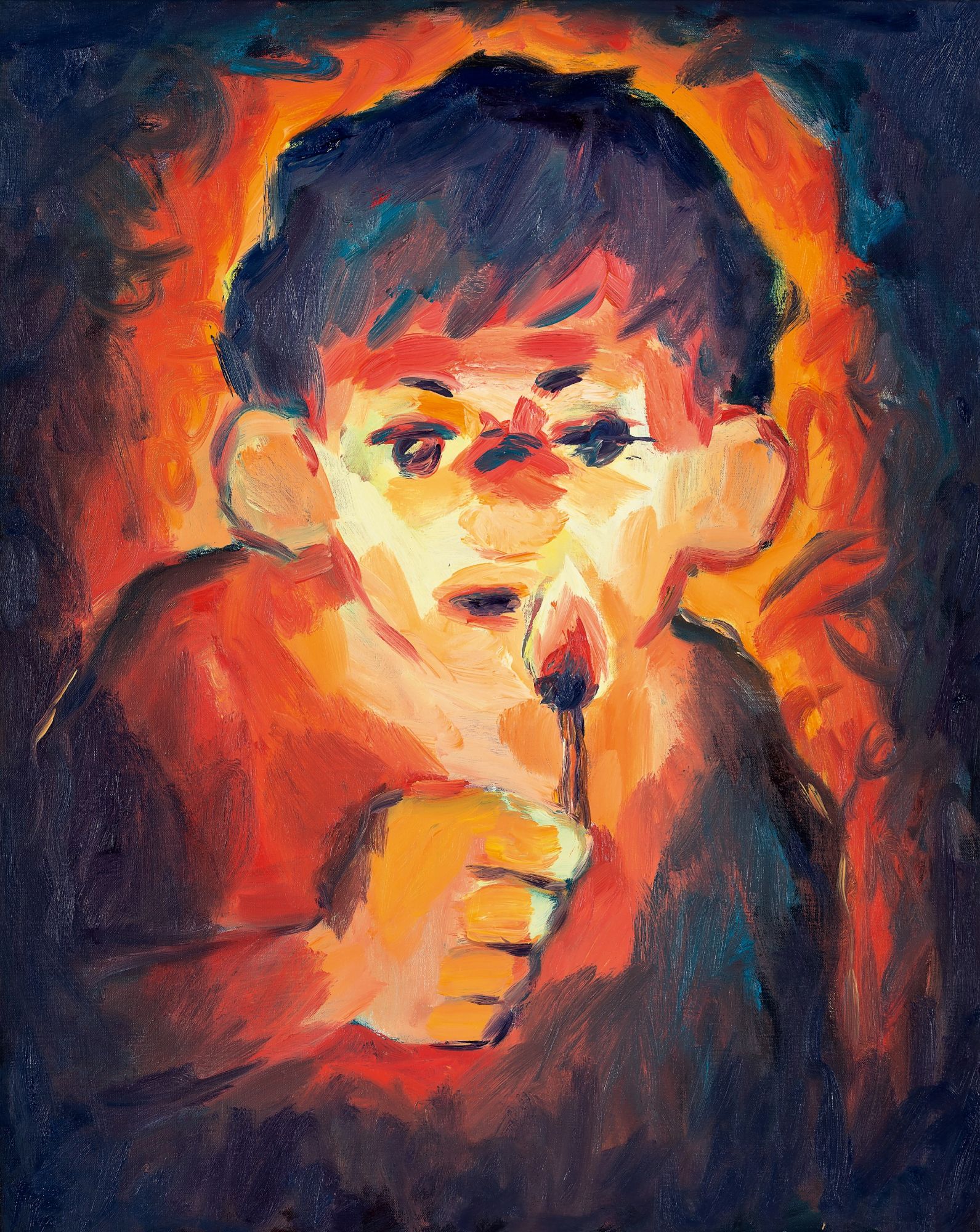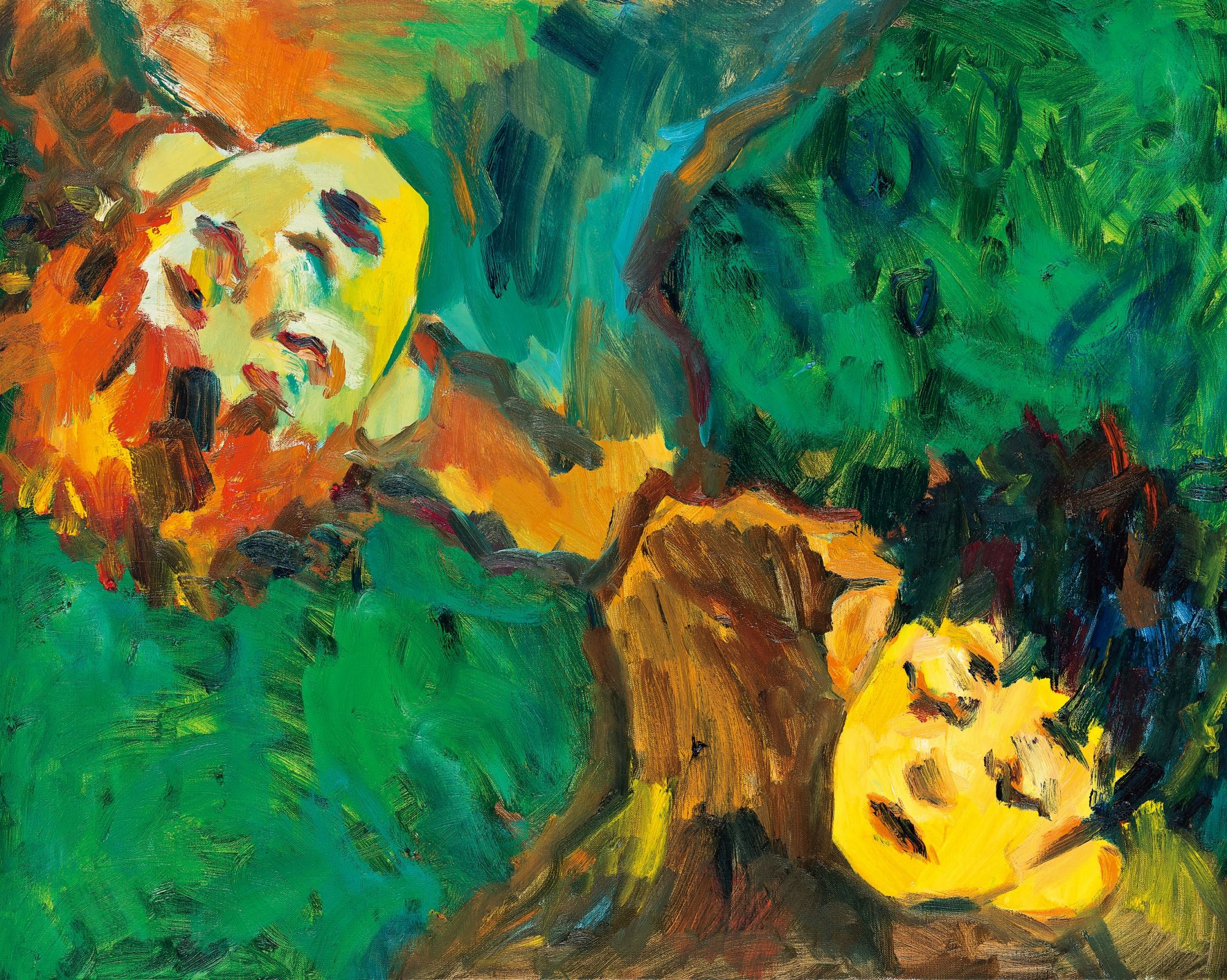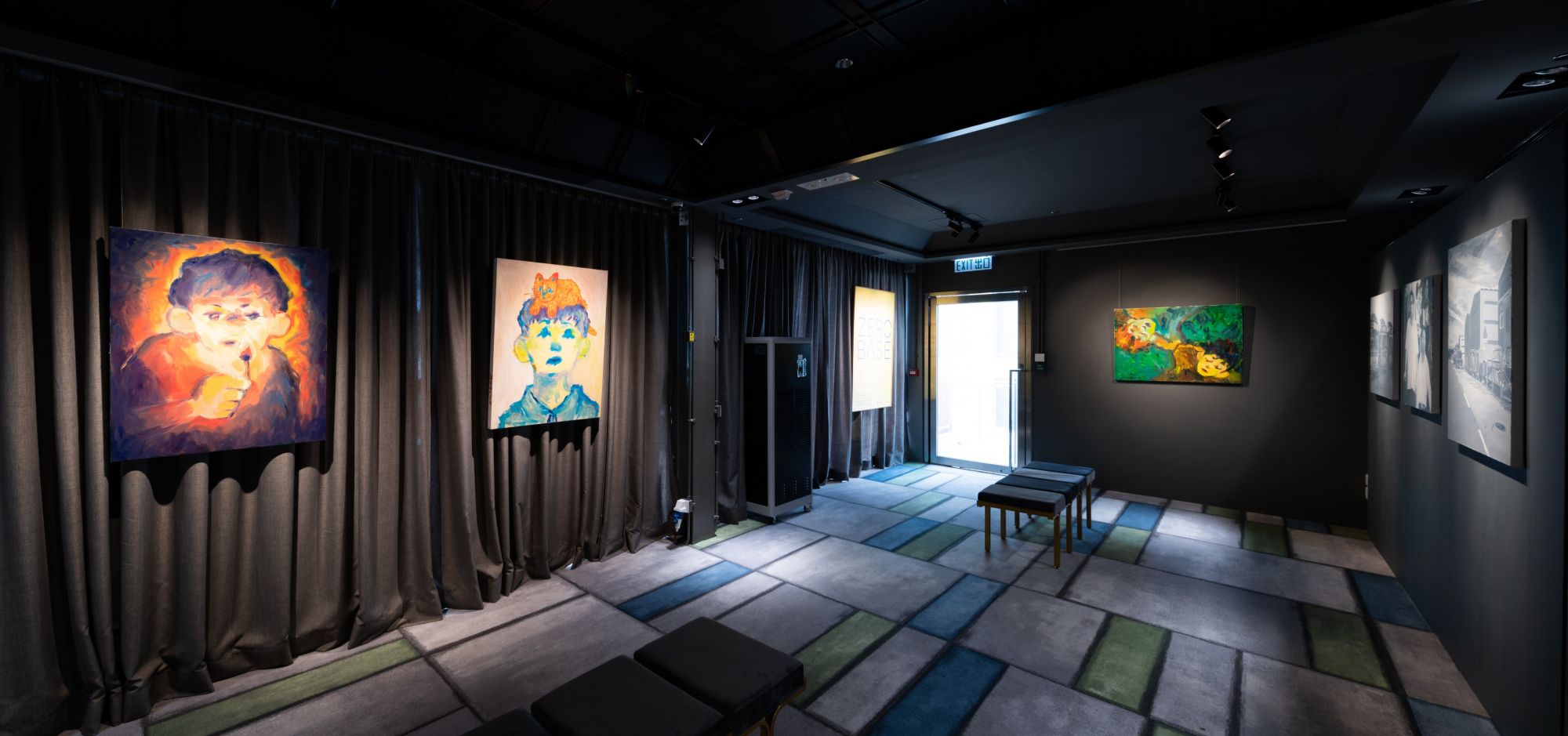The up-and-coming South Korean artist talks to Tatler about his first exhibition overseas, his creative process and working on South Korean indie rock band, Jannabi's "Legend" album cover
Qwaya is one of South Korea's top up-and-coming artists––with his artworks filled with vibrant colours of human figures showing vague expressions have garnered interest and capturing the curiosity of many. Despite this distinctive flavour and pattern in his works that are steadily making their way into the Korean art scene, Qwaya didn't actually start off as an artist. Upon graduating from university in 2016, he majored in fashion design and worked in the design field after.
But he soon discovered that the fashion industry is different from what he expected. Qwaya then set his sights on pursuing something that he has been enjoying since he was young: art. A year after graduating, Qwaya already participated in a group exhibition at the Seoul Museum of Art titled, moho project. 2020 proved to be a big year for the rising artist holding two of his most notable exhibitions, Knock Knock in Ryse Hotel, Seoul and Ordinary People in 2Gil29 Gallery.
The exhibition, Zero Base x Hong Kong at the Korean Cultural Centre in Hong Kong which runs from March 24 to April 24, marks the artist's first exhibition overseas and also showcases the work of other emerging Korean artists. Qwaya speaks to Tatler about his first venture outside of his native Korea, his creative process and designing for the South Korean indie rock band, Jannabi's Legend album cover.
See also: South Korean Artist Lee Bul On Her Homecoming Exhibition At The Seoul Museum Of Art

Congratulations on your first overseas exhibition! What makes this exhibition different from the others?
The three artworks included in the Zero Base x Hong Kong have been specifically selected for this Hong Kong exhibition. They have been newly created in the second half of 2020. I personally think it means a lot to me as this is my first overseas exhibition. These works are displayed publicly for the first time and in Hong Kong. I have great memories from my trip to Hong Kong; thus, I am especially delighted to have my work displayed in this city.
What does your name, Qwaya mean and why did you choose this name instead of using your own name?
I like the name my parents picked for me but I thought it would be nice to introduce myself with the name I picked for myself. When I was thinking about the name that can represent the story I want to tell, I made up the name “Qwaya” by combining the hanja (Chinese characters that are used in Korean) "gwaya" and the letter "Q". "Gwaya" means overnight, while “Q” can stand for words such as quiet and quest. It might look fancy when you put them into words but instead of giving it a deep meaning, I simply thought it would be exciting to work with a different name.
See also: How Artist Ernest Chang Blends Traditional Chinese Art And Contemporary Culture




